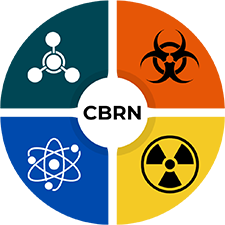The mission of the Joint Trauma System (JTS) is to improve trauma readiness and outcomes through evidence-driven performance improvement. The JTS vision is that every Soldier, Sailor, Airman and Marine injured on the battlefield or in any theater of operations will be provided with the optimum chance for survival and maximum potential for functional recovery.
JTS supports US military performance improvement (PI) initiatives and activities by identifying, tracking and making recommendations on efforts to ensure the appropriate evaluation and treatment of injured Service members across the continuum of care, improve medic training and ensure medical readiness.
The DoDTR is the first and only DoD trauma patient registry to collect combat casualty care epidemiology, treatments and outcomes from point of injury to recovery. The DoDTR contains identified information taken from medical records, expert clinical inference, scoring and coding schematics, probability determination and PI data.
As the DoD Center of Excellence for MHS trauma care delivery, JTS directly assists each Combatant Command in trauma system planning, treatment, management, and improvement of casualty outcomes to include battle injuries, disease non-battle injuries and all-hazard settings through evidence-driven performance improvement.








 DHA Medical Logistics has created Class VIII lists for the following combat casualty care CPGs with more to follow. The materiel lists are crucial because they detail all necessary medical supplies (like bandages, medications, surgical instruments, and blood products) required to maintain a military force's health during operations, essentially acting as a critical inventory to ensure timely access to essential medical equipment and medications.
DHA Medical Logistics has created Class VIII lists for the following combat casualty care CPGs with more to follow. The materiel lists are crucial because they detail all necessary medical supplies (like bandages, medications, surgical instruments, and blood products) required to maintain a military force's health during operations, essentially acting as a critical inventory to ensure timely access to essential medical equipment and medications.





